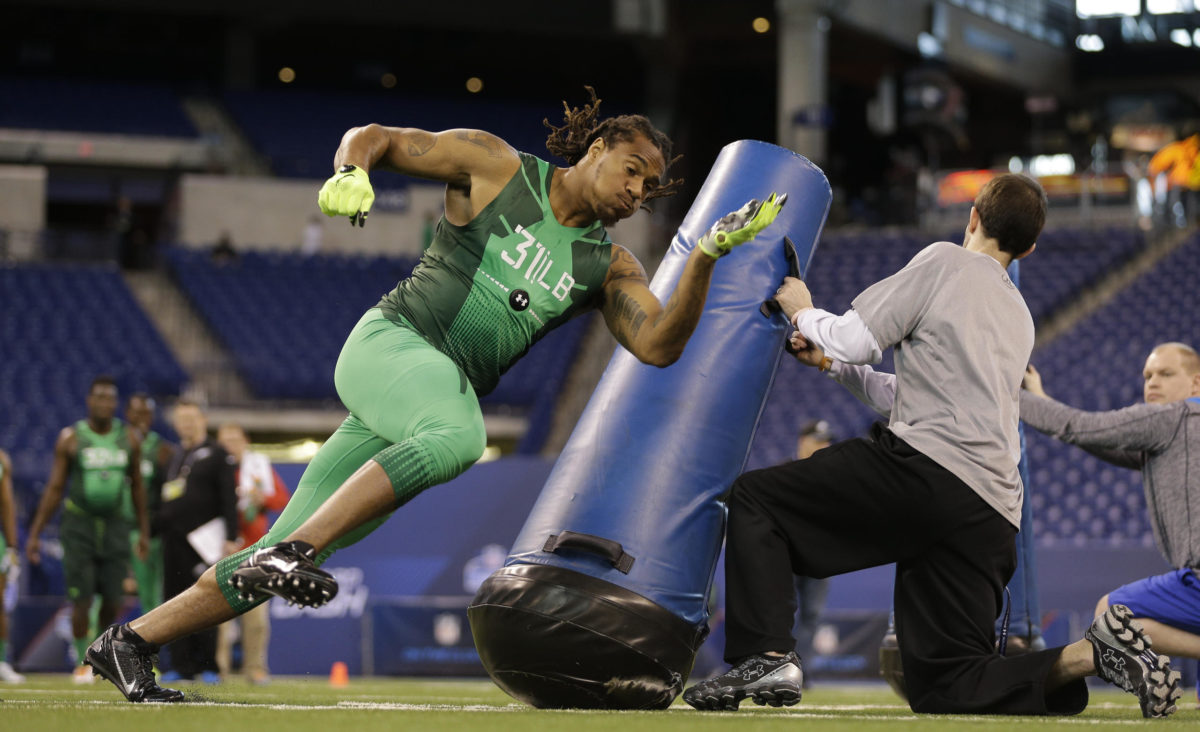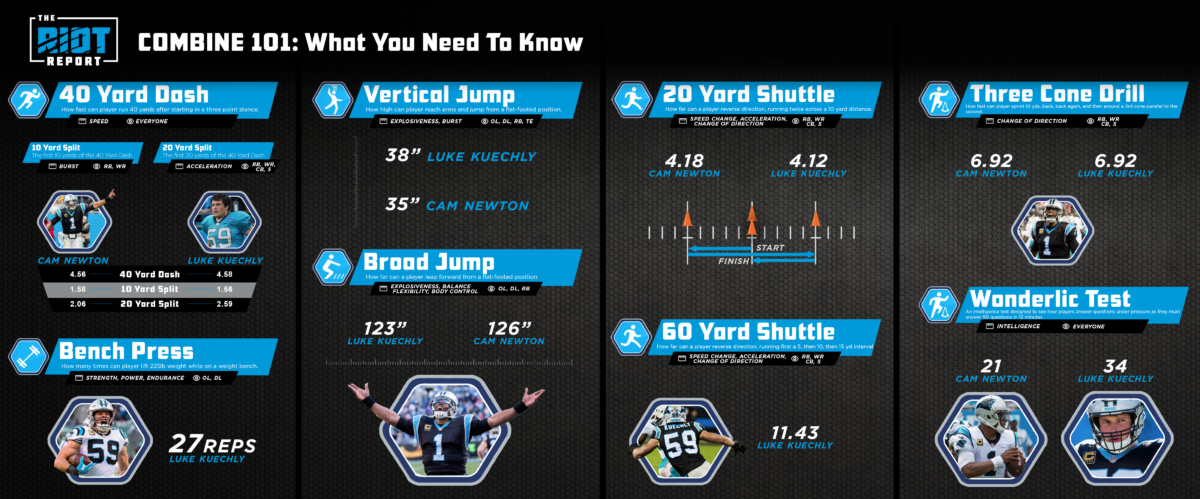This week, 336 of the top football prospects in the nation will gather at Lucas Oil Stadium in Indianapolis to prove their mettle in multiple drills designed to equate players “running around in their underwear” to on-the-field skills; how players perform this week in certain drills will not only be the difference between which round they are drafted, but whether some players will be drafted at all. While marquee players like Baker Mayfield and Saquon Barkley can only confirm the analysts who already think they are worthy of being picked first overall by the Cleveland Browns, players like Alex Cappa or Garrett Johnson are fighting to stay on teams’ draft boards come the end of April, and a fast 40-yard dash or three-cone drill can make that happen.
Everyone knows that the 40-yard dash is an easily translatable drill to the NFL: how fast a wide receiver can run 40 yards down the field is easy to quantify for fans, you can see the speed of a prospect and ostensibly, a 4.3 wide receiver will be able to outrun a 4.5 cornerback. That’s easy. But what does the three-cone drill show you about a player? Does the vertical jump actually matter the most for offensive linemen? What position should you be keeping an eye on in the 20-yard shuttle? Let’s take a look at the main drills most players will be completing in an attempt to show their best side to potential employers this week in Indy:
40 Yard Dash
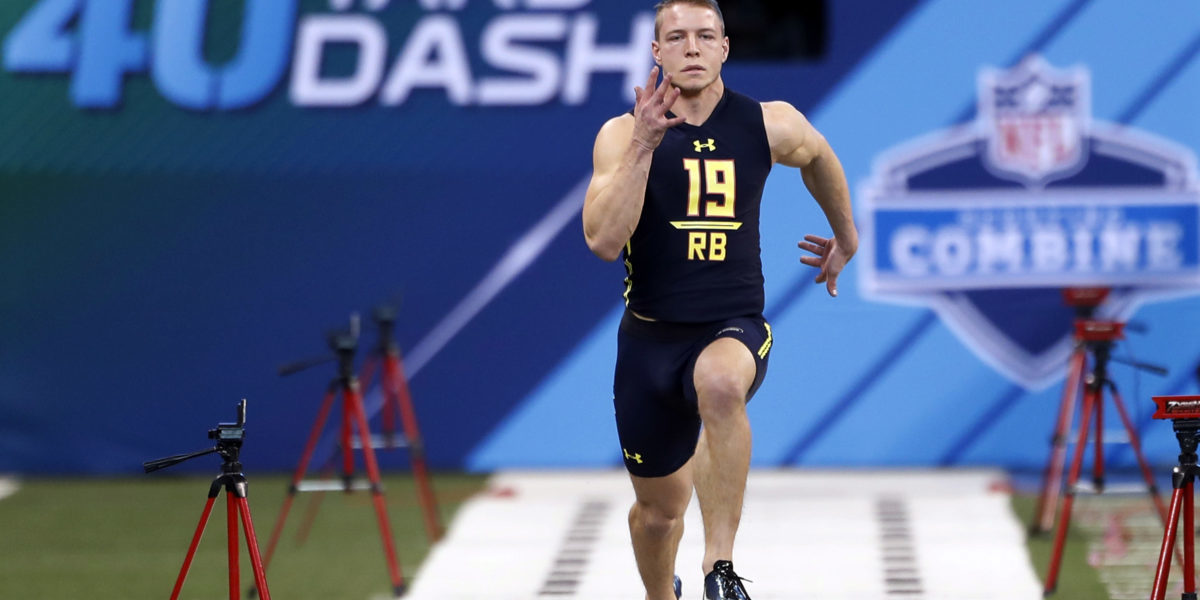
Photo Credit: Brian Spurlock/USA TODAY Sports
The marquee event at the NFL Combine each year can make a good player appear great and a prospect with question marks tumble down teams’ draft boards with a worse-than-expected performance. Robert Griffin III famously turned a 4.41-second 40 into becoming the second pick in the draft, while Devin Funchess thinks his 4.7 time dropped him to a second-round pick in 2015. How a player starts from a stationary stance and explodes to top speed is easily replicable on the field, and the 10 and 20-yard splits are a good measure of both acceleration and burst off the line, perhaps even more important than the top speed that the 40 shows for wide receivers and running backs. The 40 isn’t as important for linemen, but it is a good chance to see them run; the best linemen look like athletes when they run: see Ryan Kalil, who ran the 40 in less than five seconds in 2007.
Bench Press
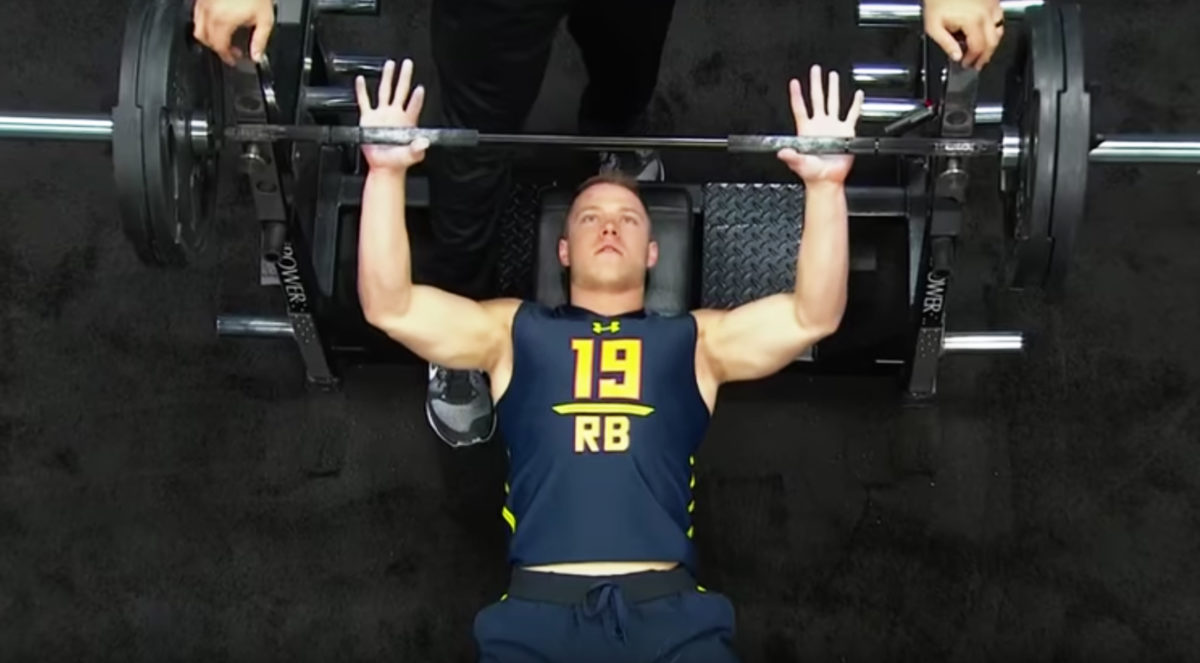
Photo Credit: NFL Network
Anyone that has set foot in a gym has tried their hand at a bench press rep, and the Combine version of players attempting to bench 225 pounds as many times as possible without resting can be a testament to not only strength, but endurance and power; the bench press is most important for offensive and defensive linemen, a lineman that crosses the 30 threshold will raise some eyebrows and may point to a prospect that has the body type to contribute right away in the NFL. Like all drills, bench press must be taken with a grain of salt; last year, Christian McCaffrey only got 10 reps in, the second-lowest of all running backs at the combine, but the Stanford strength and conditioning program doesn’t focus on weight training, so players from Stanford traditionally do not perform well on the bench.
Vertical & Broad Jump
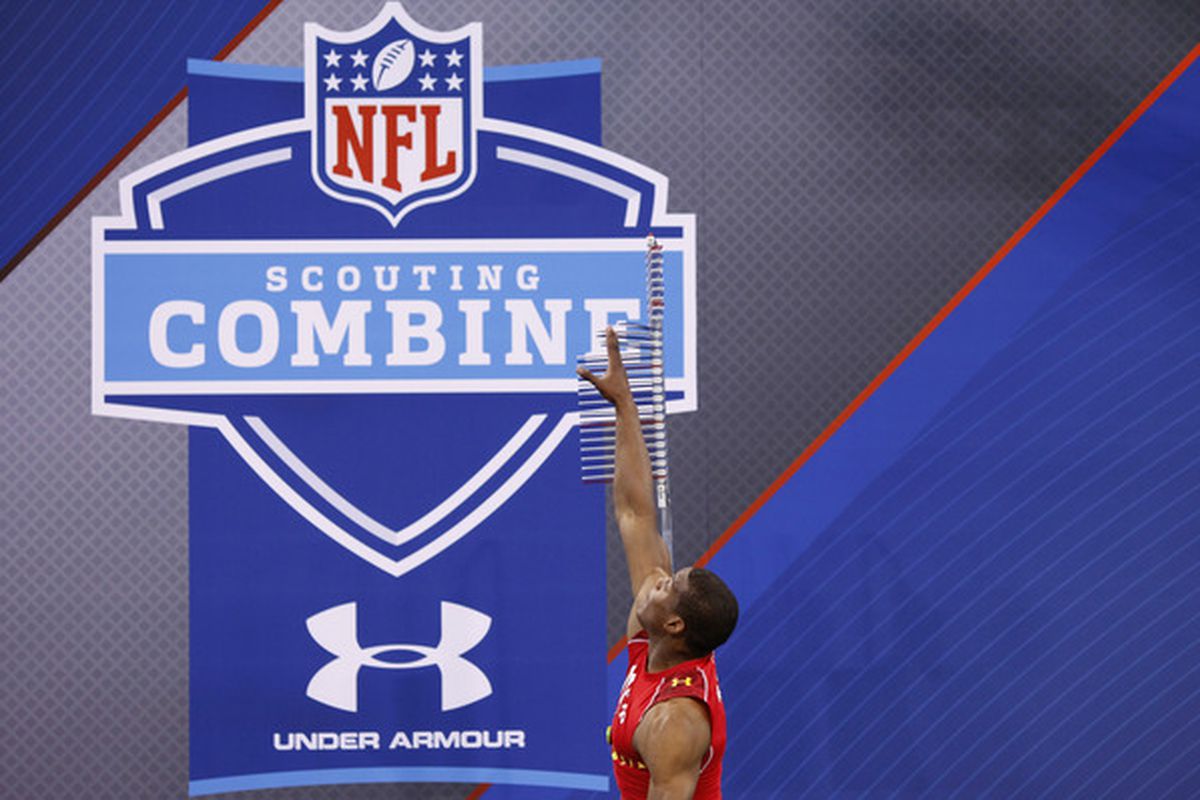
Photo Credit: Joe Robbins/Getty Images
While first instinct would seem as if the vertical jump is a drill designed to showcase jump-ball abilities for wide receivers, the vertical jump may be the best test of explosiveness at the Combine. Linemen can show explosiveness from a standing position and how strong their leg-push and leverage will be in the NFL and the two jumps are arguably the most important for lineman the entire weekend; running backs can show their explosiveness and strength from a burst and blocking perspective. The broad jump helps to demonstrate balance and hip flexibility – another hugely important trait for lineman who must get out of their stances with sizable force on every snap – how players land on the broad jump can demonstrate both body control and balance, important for running backs and wide receivers.
20 or 60 Yard Shuttle
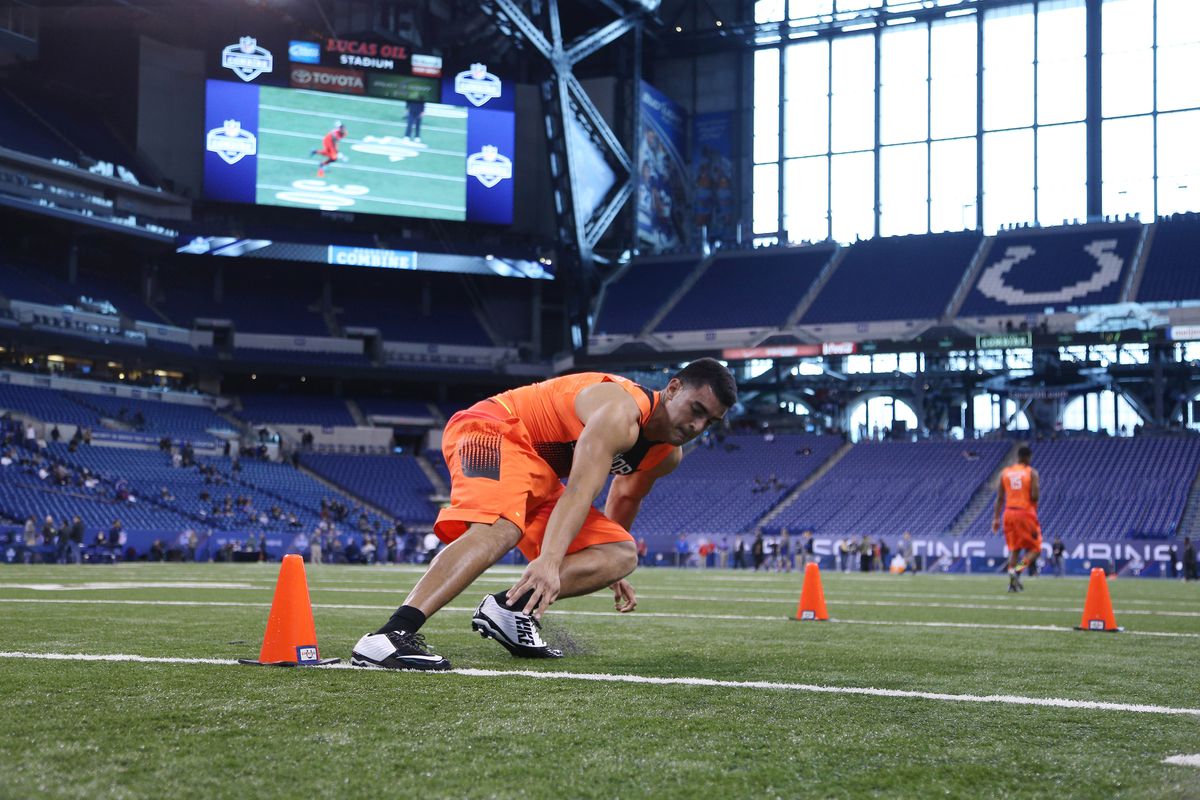
Photo Credit: Brian Spurlock/USA Today Sports
This drill can show a players stop-start and change-of-direction ability. Players start with two cones on each side of them five yards away, and are timed sprinting to one cone before changing direction and sprinting ten yards to the opposite cone, changing direction again and sprinting five yards to the initial starting line. This has led to the drill also being referred to as the 5-10-5 drill; the ability to change speeds, stop and accelerate to top speed is hugely important for wide receivers, running backs and especially defensive back prospects. The 60-yard version of the shuttle (with double the distance, essentially a 10-20-10 drill) is a great test for endurance, but the 20-yard shuttle is extremely important when showcasing twitch, quickness and agility.
Three Cone Drill
What is most interesting about the three-cone drill is that it’s less about the time the prospect achieves, but how he looks doing it; a linemen who can carry his weight well as he weaves between the cones will most likely be able to do well in space at the next level. A fluid change-of-direction for defensive backs and wide receivers is extremely important, as this drill showcases hip flexibility and balance; running backs and edge rushers can showcase their burst and directional versatility in this drill. When you want to see sharp cuts into acceleration from running backs, this is where you look.
Other Important Factors
- Teams will interview prospects they are interested in, this can be especially important for quarterbacks, but every player needs to fit into a team’s specific culture; the interview portion is a good chance to get to know the player’s passion and work ethic.
- Each player will take the Wonderlic test, an intelligence test designed to see how players answer questions under pressure as they answer 50 questions in 12 minutes.
- Each position player will go through specific drills for their group, some of those will include the following:
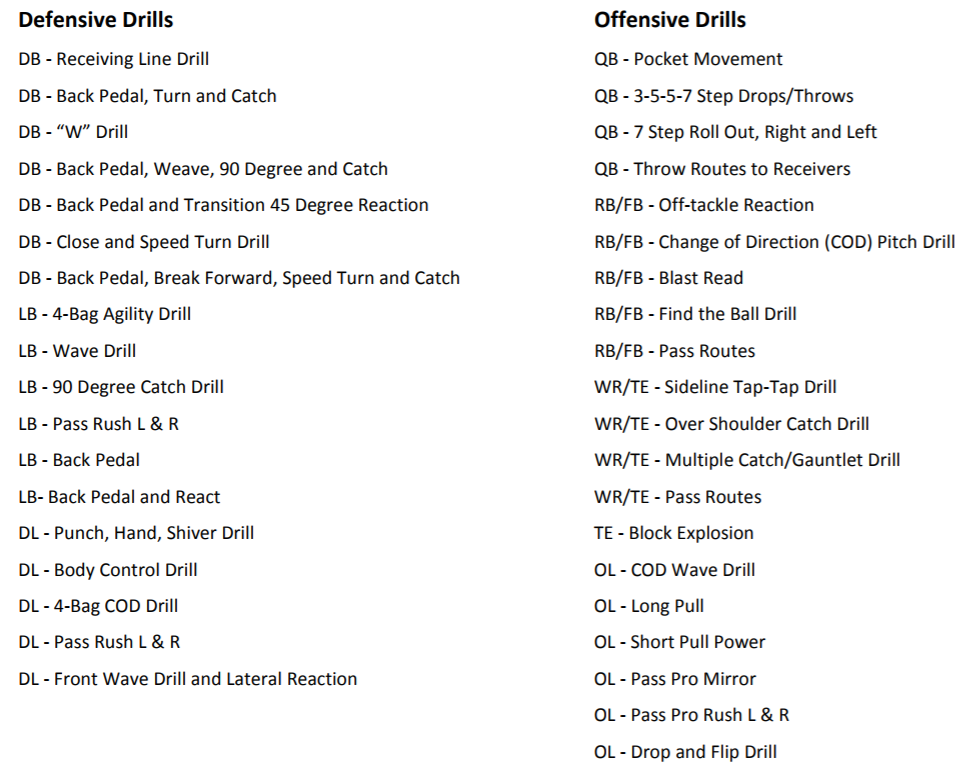
- Perhaps the most important activity at the Combine is the in-depth physical that each player must undergo; it’s a chance for teams to see whether the quarterback listed at 6’3″ in his college media guide is actually 6’1″ or if Josh Allen really has hands the size of Wyoming. A 40 time or bench press number can be tracked at a pro day or personal workout, but the full battery of medical testing can reveal a former injury that could pop up down the road; a checkered injury history or condition arising can drop a prospect down the board. Star Lotulelei was projected as a top pick before the medical testing at the Combine revealed a heart condition that ultimately dropped him to the 14th pick in the draft.
For daily updates and live reports from Indianapolis, be sure to check back to The Riot Report every day this week!

